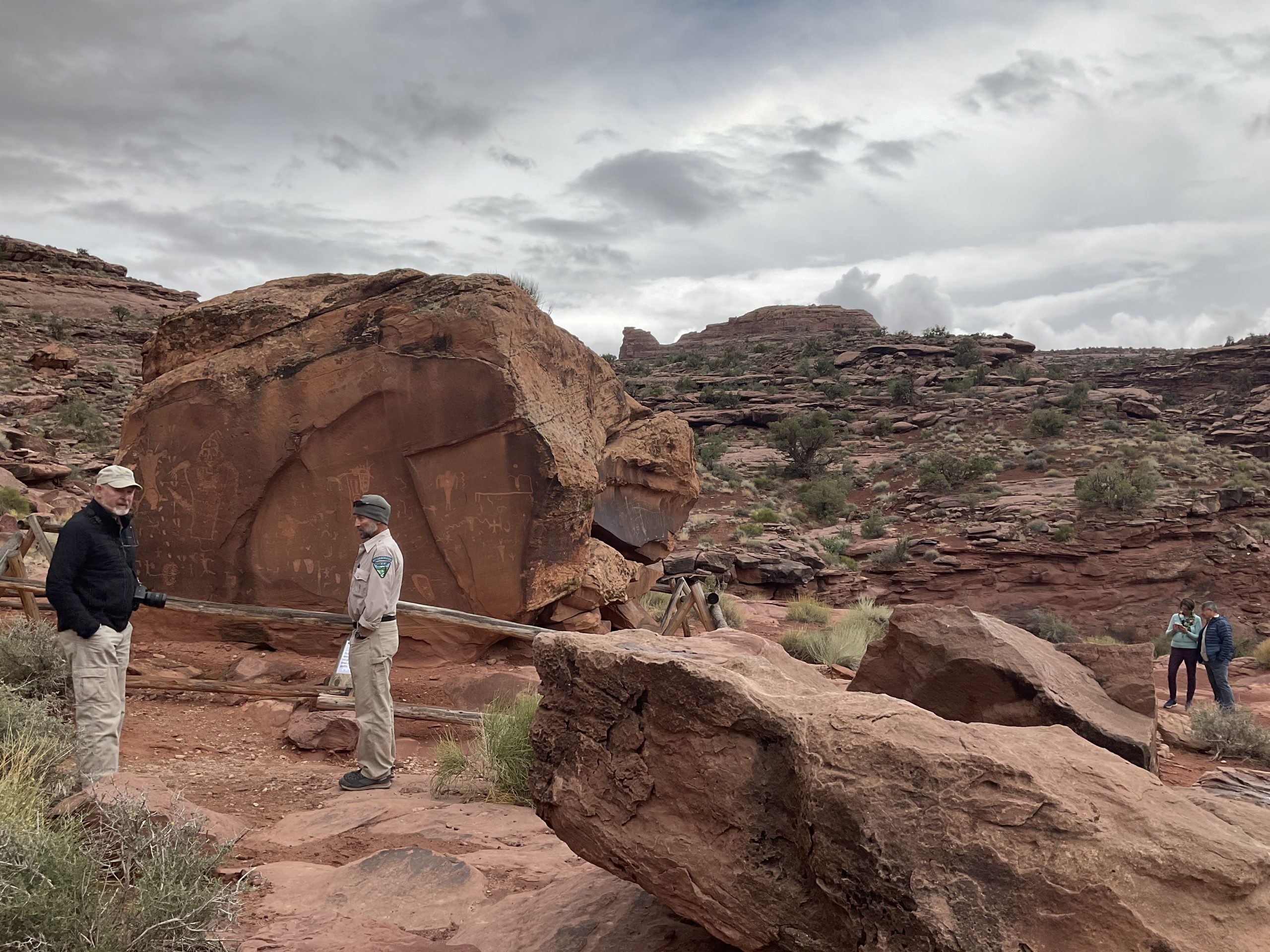Some information may be outdated.
“That is disturbing… I thought at this day and age we would all respect one another’s identity,” said Woody Lee, executive director of Utah Diné Bikéyah, when he was informed about the recent vandalism of the Birthing Rock petroglyphs. [Read “1,000-year-old petroglyphs marred by graffiti” -ed.]
“Civilization here is supposed to be at a higher level, and yet we degrade ourselves by doing stuff like this,” Lee said. UDB is a nonprofit with representatives from five tribes in the Southwest—the Navajo, Hopi, Zuni, Ute Mountain Ute and Uintah Ouray Ute—that strives to preserve and protect cultural and natural resources of ancestral Native American lands for the benefit and healing of people and the earth.
Lee said that he hopes public discussion and continuing education efforts can help generate understanding and respect between people, including the vandal who damaged the Birthing Rock panel.
“The individual needs to be healed,” Lee said of the vandal.
The vandalism comes just weeks after press coverage of another incident in which a petroglyph panel in the Moab area was damaged. Earlier this month, Richard Gilbert, a medically retired marine who lives in Colorado Springs, bolted a route at the Sunshine Wall just north of Arches National Park, without realizing he was developing right on top of a petroglyph panel.
Gilbert said that he thought the images were recently carved graffiti, mistaking a figure with what appears to be a shield and a spear for a helicopter landing pad symbol. Upon learning his error, he apologized online, warned others not to climb the route on climbing information websites, and drove to Moab to talk with the local BLM about what he could do to help repair the damage.
“He came forward and said, ‘I did this, and I’m sorry.’ He was truthful in coming out and saying this,” said Lee. From there, Lee said, land stewards can advance education efforts. UDB contacted climbing groups and influencers to ask for their help in educating their communities about petroglyph panels and their importance to tribes.
UDB Cultural Resources Coordinator Angelo Baca participated in an April 26 webinar hosted by the Access Fund called “Climbing on Sacred Land: Understanding and respecting Indigenous culture.”
The Access Fund is a national nonprofit that advocates for climbing access and conservation of outdoor areas; at the April 26 webinar, Director Chris Winter said of the group, “One of our core values is deep respect for the Indigenous people.”
Other panelists in the discussion included Gilbert, the climber who bolted over petroglyphs at Sunshine Wall; Ashleigh Thompson, a member of the Red Lake Ojibwe and Eagle Clan and PhD Candidate in Indigenous Archaeology/American Indian Studies at the University of Arizona; Skye Kolealani Razon-Old, a native Hawaiian and founder and director of the nonprofit Kanaka Climbers; and Chris Shulte, an author, board member of the local nonprofit Friends of Indian Creek, and professional climber who has spent much of his life and climbing career in the southwest, including the Moab area. All of the panelists identified themselves as climbers or former climbers.
The panelists spoke of a culture of entitlement among outdoor recreationists, particularly among rock climbers.
“There’s a lot of privilege and a lot of imposition from these folks who are enjoying public lands and national monuments and parks—and almost never giving a second thought to the fact that the only reason they’re public is because they were stolen,” said Baca.
Thompson highlighted the irony of the Access Fund hosting the webinar, in light of some of their past campaigns in which they took legal action against tribes in an effort to keep access for rock climbers.
Panelists also denounced the concept of “wilderness” promoted by many conservation advocates, pointing out that archaeology shows that people inhabited many of the areas thought of as “wild” long before European settlers arrived. Many iconic national parks, such as Yosemite and Glacier, were home to Indigenous people before the tribes were killed or relocated and their lands declared parks.
“Indigenous people have been murdered, battled, and removed so that settlers could have access to these lands,” said Thompson.
Another item discussed was the impression many Americans have that Native American cultures are a thing of the past. Public education systems, the panelists noted, often teach about Native American tribes as if they are gone, if they cover them at all.
“People might view this crime, and other crimes, as victimless, because they can’t draw the connections between these sites and people,” said Thompson. She explained that Indigenous religions are place-based, rather than ritual-based: specific sites are, and have been, sacred to tribes for generations. Existing rock art panels are not remnants of a lost culture; they are sacred sites within living, location-tied cultures.
Though pain and frustration were evident in the discussion, the panelists all expressed hope that continuing conversations will be productive. They encouraged listeners to support Indigenous advocacy efforts, research the protocols of the tribes on whose land they may be recreating, and visit respectfully by following those protocols and “leaving no trace.”
“Healing is hard work. It can be very difficult and painful, it’s not easy, it requires a lot of introspection,” said Baca.
Appreciate the coverage? Help keep local news alive.
Chip in to support the Moab Sun News.





